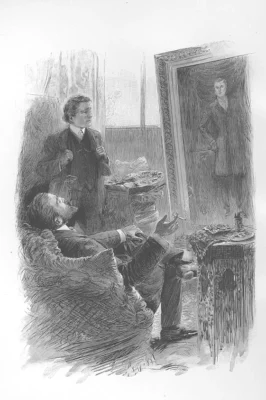
Oscar Wilde’s The Picture of Dorian Gray is a timeless exploration of beauty, vanity, and moral corruption—a gothic masterpiece that still fascinates readers more than a century after its publication in 1890. Blending decadent aestheticism with a dark cautionary tale, Wilde weaves a story that lingers long after the final page.
A Tale of Beauty and Ruin
At the heart of the novel is Dorian Gray, a stunningly handsome young man whose portrait is painted by artist Basil Hallward. When Dorian sees the finished painting, he wishes that he could remain forever youthful while the portrait ages instead. In a chilling twist of fate, his wish comes true. While Dorian’s appearance remains untouched by time or sin, his portrait transforms with every moral transgression, reflecting the grotesque decay of his soul.
The story follows Dorian’s descent into hedonism under the influence of the charismatic Lord Henry Wotton, who champions a life devoted to pleasure and sensory experiences. As Dorian pursues every indulgence without consequence—at least outwardly—his portrait bears the burden of his corruption, becoming more monstrous with each passing year.
Themes that Still Resonate
The Picture of Dorian Gray delves into profound themes that feel surprisingly modern. It questions the value society places on surface beauty and youth, the dangers of vanity, and the consequences of living a life without moral restraint. Wilde’s novel is also a sharp critique of superficial culture—a topic just as relevant in our age of social media filters and curated online personas.
Additionally, the book explores the duality of human nature: the contrast between how we appear to the world and who we truly are inside. Dorian’s unchanging face masks a corrupted soul, raising uncomfortable questions about how often we hide our own flaws beneath a polished exterior.
Why It’s Worth Reading (or Re-Reading)
Beyond its philosophical depth, Wilde’s prose is a joy in itself—witty, clever, and laced with memorable epigrams. Lines like “The only way to get rid of a temptation is to yield to it” and “Nowadays people know the price of everything and the value of nothing” are quoted as often today as they were scandalized over in Wilde’s own time.
Whether you’re drawn by the dark gothic atmosphere, Wilde’s sparkling dialogue, or the novel’s timeless exploration of the human condition, The Picture of Dorian Gray remains one of literature’s most compelling and unsettling works.
A Call to Reflection
Perhaps what makes this novel so enduring is how personally it strikes. It invites us to ponder our own choices, to question how far we might go to preserve youth or satisfy desire, and to wonder what our own “portrait” might reveal if it mirrored our souls.
Explore our collection of minimalist art prints inspired by classic literature — and let timeless quotes from The Picture of Dorian Gray add a thoughtful, beautiful touch to your home.
